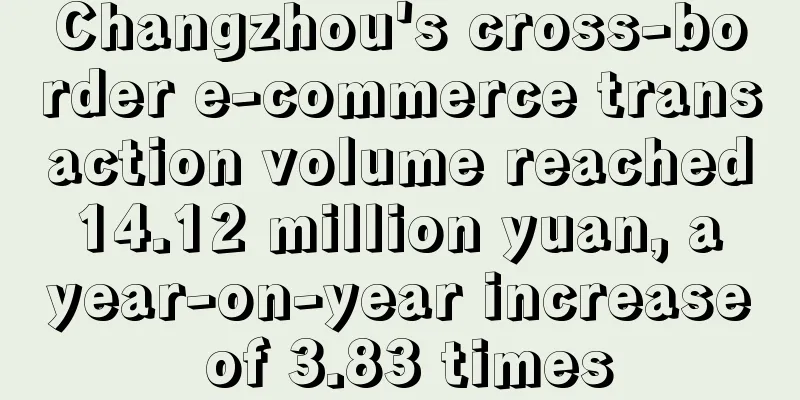It was learned from the Jiangsu Inspection and Quarantine Bureau that in 2017, the total value of cross-border e-commerce import and export goods supervised by Changzhou Port was 14.12 million yuan, a year-on-year increase of 3.83 times. Among them, outbound B2C business accounts for more than 99% of Changzhou's overall business, ranking among the top three in Jiangsu Province.
Staff from the Jiangsu Inspection and Quarantine Bureau told reporters that in 2017, four new cross-border e-commerce business entities were registered at Changzhou Port, 125 new products were registered, and a total of 169,600 cross-border e-commerce import and export orders were supervised, with a total value of 14.12 million yuan. The business volume increased rapidly compared to 2016, with batches increasing by 3.63 times year-on-year and the value of goods increasing by 3.83 times year-on-year. Among them, the outbound B2C business accounted for more than 99% of Changzhou's total, an increase of more than 3.6 times compared with 2016, achieving a leapfrog growth.
It is understood that the B2C products exported by cross-border e-commerce in Changzhou are mainly light industrial textiles, including clothing, luggage and toys, etc., which are mainly exported to developed countries and regions such as Europe and the United States. The United States, Canada, France, Australia and Germany ranked in the top five in terms of export trade value. It is worth noting that in 2017, Changzhou's cross-border e-commerce increased its market development efforts and achieved breakthrough progress in export countries. Currently, the total number of trading countries has increased to 23, covering five major regions in the world, including North America, Europe, and Oceania.
Changzhou, Jiangsu Province deepens the "deregulation, supervision and service" reform and makes every effort to promote the vigorous development of emerging cross-border e-commerce business models. First, the construction of the "single window" has achieved remarkable results. In February 2017, Changzhou's local public service platform was successfully connected with Jiangsu Province's cross-border e-commerce inspection and supervision system, and the prototype of Changzhou's "single window" took shape. In June 2017, Changzhou's cross-border e-commerce "single window" was successfully launched, and cross-border e-commerce electronic declaration, "one-place filing, nationwide sharing" and other conveniences have been implemented, which not only realized "information exchange, mutual recognition of supervision, and mutual assistance in law enforcement" among government departments, but also implemented the task of streamlining administration and delegating power reform to "let data do more and enterprises do less." The second is the new expansion of cross-border e-commerce business models. On July 28, 2017, the first batch of cross-border e-commerce direct mail import business in Changzhou was launched, making Changzhou the third full-service cross-border e-commerce city in the province that integrates the "export direct purchase" and "import direct purchase" models. The third is to build a closed-loop risk management system for cross-border e-commerce. On the basis of full registration and declaration of cross-border e-commerce, a quality and safety assurance system of "risk monitoring, integrity management, and process traceability" is established. In 2017, the Changzhou Bureau organized a risk assessment on the province's cross-border e-commerce imported diapers and exported textiles and formed a risk assessment report. The method of "daily supervision + regular monitoring, mystery buyers + offline spot checks" is adopted to monitor cross-border export commodities. The unqualified data of risk monitoring has been reported to the relevant departments to remind e-commerce enterprises and provide technical guidance in order to improve the quality of cross-border e-commerce export products.

